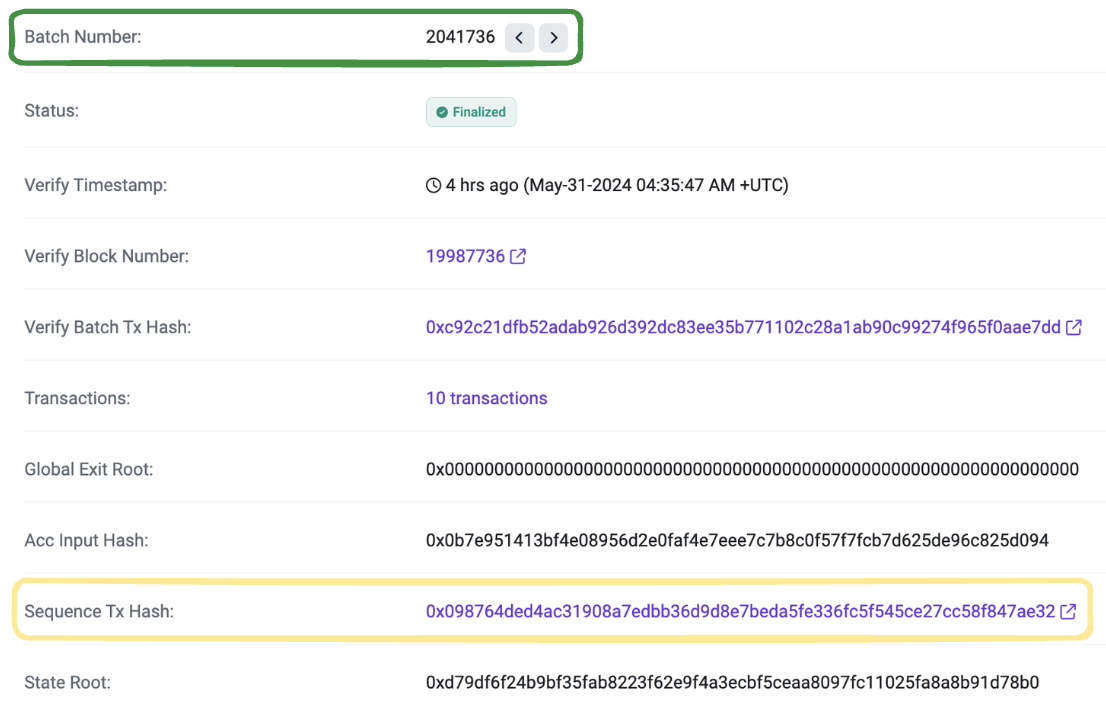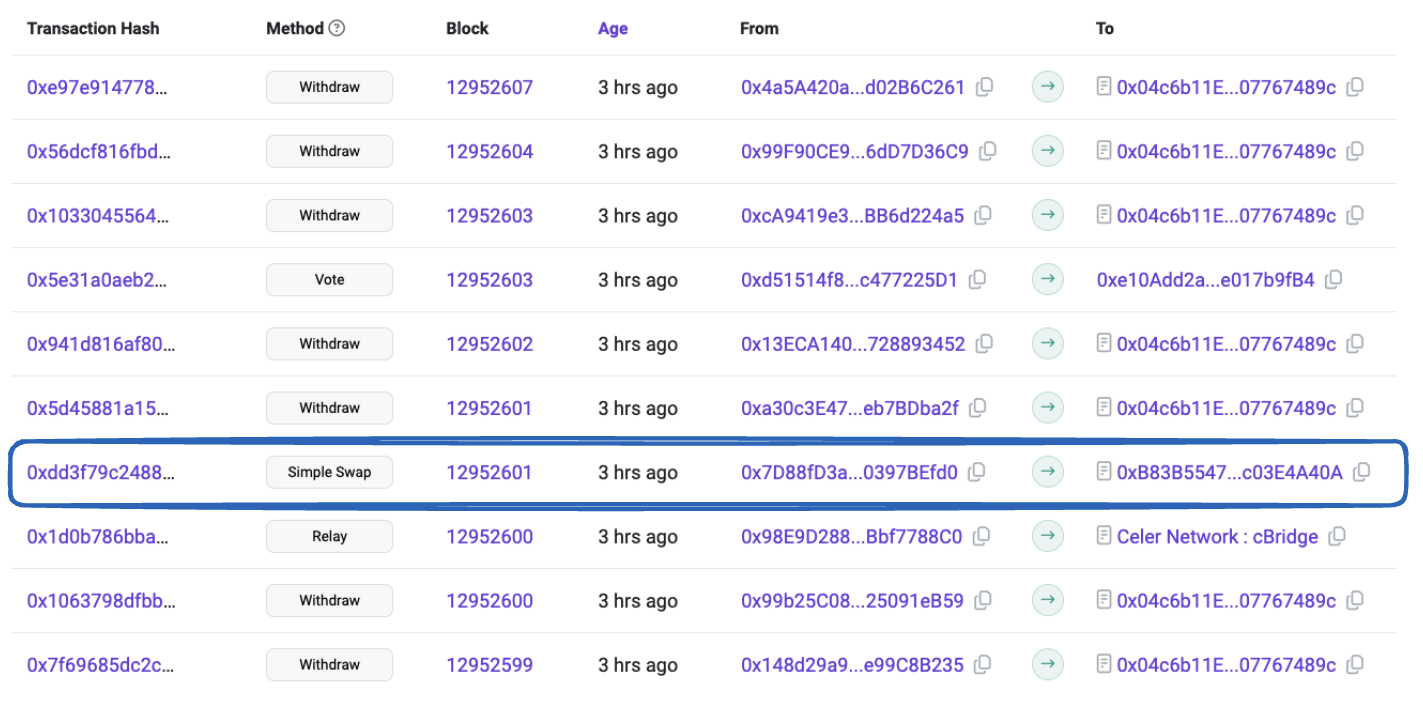Batches, blocks, and transactions¶
The following definitions are key to understanding how transactions are handled on L2s built with the CDK:
- Transaction: A signed instruction to perform an action on the blockchain.
- Block: A group of transactions and a hash of the previous block in the chain.
- Batch: A group of many transactions from multiple blocks.
Transactions are included in blocks, and these blocks fill batches, which are then sequenced. See the figure below to best understand how these elements relate to each other.

Transaction¶
A transaction is a cryptographically signed instruction from an account to update the state of the blockchain.
Let’s take a look at a real transaction in the Polygon zkEVM (which is in a way a CDK rollup), and inspect how the transaction is recorded in the explorer as part of a block, then a batch, and ultimately in a sequence.
Consider the Polygon zkEVM transaction with the transaction hash, 0xdd ... 6ef8, which performs a Simple Swap function call, and is included in block number 12952601 on the L2.

Block¶
Each block must include the hash of the previous block, along with multiple transactions, to establish a link to the block before it.
Continuing with the above transaction, identified by the hash 0xdd ... 6ef8 and contained in block 12952601, we observe that this block contains 2 transactions in total.
Also, as depicted in the figure below, block 12952601 is in turn contained in batch 2041736.

Batch¶
Batches contain multiple transactions from multiple blocks.
The two transactions from our example block 12952601 are included in batch 2041736, which contains 10 transactions in total.
This means batch 2041736 includes the two transactions from block 12952601 as well as eight transactions from other blocks.
As observed in the figure below, the presence of the Sequence Tx Hash field associated indicates that the batch has been sent to Ethereum along with other batches in a single transaction.

Further inspection of the transactions in the batch, as depicted in the figure below, reveals that:
- Our transaction example, with hash
0xdd ... 6ef8, is included in this batch. - The batch contains several transactions from different blocks.

Since Polygon zkEVM is a rollup (that is, it uses Ethereum for data availability), it sends an array of batches to Ethereum, by providing the array as an argument to the sequenceBatches() function of a smart contract on Ethereum.

We can inspect the Sequence Tx Hash transaction to ascertain if batch 2041736, containing our original transaction example, was indeed part of the argument to the sequenceBatches() function.
In this case, batch 2041736 happens to be the last batch to be sequenced, as depicted in the figure below.
